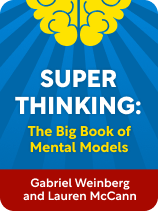

This article is an excerpt from the Shortform book guide to "Super Thinking: The Big Book of Mental Models" by Gabriel Weinberg and Lauren McCann. Shortform has the world's best summaries and analyses of books you should be reading.
Like this article? Sign up for a free trial here.
What is a decision tree? What are the advantages of decision trees over the pro-con list and the cost-benefit methods?
A decision tree is a flowchart diagram that shows the possible outcomes of a series of options or choices. Unlike the pro-con list and the cost-benefit analysis, the decision tree method doesn’t assume that you know what will result from your decision.
Keep reading to learn about decision tree analysis and how it’s used in decision-making.
Decision Trees
Sometimes, decisions have many possible outcomes, and you have only a rough idea how likely any given outcome is. For instance, when governments institute new policies, they rarely know the exact consequences beforehand.
In such cases, use a decision tree to handle this uncertainty. In addition to assigning monetary values, decision trees also assign probabilities to each outcome, representing the likelihood that it will occur.
To see this in action, let’s continue the lawyer example with a few caveats: First, if you accept the new position, there’s an 80% chance that you’ll thrive and eventually become a partner. Second, the increased pressure might make you crack, so there’s a 20% chance that you’ll end up getting fired at the new job. Finally, you’re 100% certain that staying at your current job will lock you into your current position—an associate—for the foreseeable future.
Here, there are three possibilities: You accept the new job and become a partner, you accept the new job and crack under pressure, or you stay at your current job and remain an associate. Assuming you’ve assigned these three outcomes values of $100,000, -$50,000, and $75,000, respectively, you can create the following decision tree:
This decision tree lists possible decisions in the first node (rectangles), the likelihood of a given outcome in the second node (ovals), and the monetary value of that outcome in the third node (diamonds).
One of the main advantages of decision trees is that they allow us to calculate each decision’s expected value, the average monetary value resulting from a decision. To do so, multiply the likelihood of each outcome by its respective monetary value, and then sum them up for each decision. If your decision has two possible outcomes, your calculation would look like this:
(Outcome 1 likelihood)x(Outcome 1 monetary value) + (Outcome 2 likelihood)x(Outcome 2 monetary value) = (expected value)
For example, you’d calculate the expected value of accepting the new job with this formula:
(0.8)x($100,000) + (0.2)x(-$50,000) = $70,000
By contrast, the expected value of keeping your current job is more straightforward:
(1)x($75,000) = $75,000
Because the expected value of keeping your current job is higher than that of accepting the new job, the decision tree recommends keeping your current job.
| Does Deliberation Yield More Satisfying Decisions? The decision-making tools Weinberg and McCann discuss all assume that deliberation leads us to make better decisions. However, this assumption might be false; one recent set of studies showed that, even for complex decisions, people were generally more satisfied with decisions made without deliberation. For example, among customers shopping for complex products at IKEA, those who purchased products without deliberating were more satisfied than those who purchased products after deliberating. One possible explanation for these results is that customers who deliberate before making decisions have higher expectations, making them harder to satisfy. It’s possible that conscious deliberation still leads to better decisions, even if it doesn’t lead to more satisfying decisions. Consequently, this allows us to reconcile the studies’ results with Weinberg and McCann’s assumption that deliberation helps us make better decisions. |

———End of Preview———
Like what you just read? Read the rest of the world's best book summary and analysis of Gabriel Weinberg and Lauren McCann's "Super Thinking: The Big Book of Mental Models" at Shortform.
Here's what you'll find in our full Super Thinking: The Big Book of Mental Models summary:
- How to elevate your everyday reasoning and decision-making skills
- Why you shouldn't rely on intuition when making decisions
- How to deter you opposition from engaging in conflict






